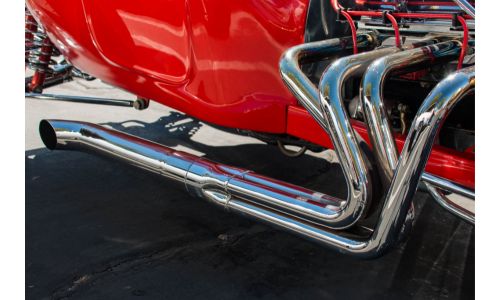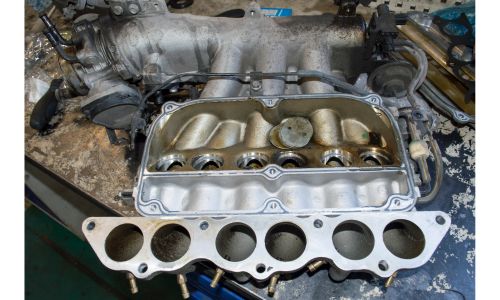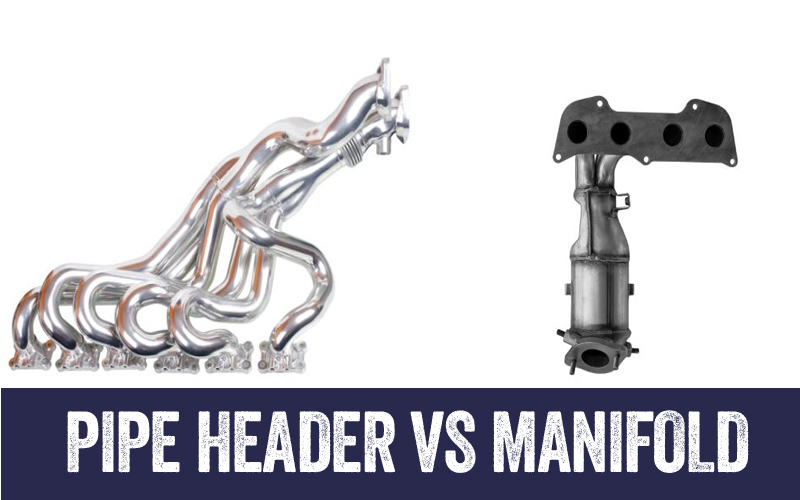When it comes to flow control in various industries, two key components often take center stage: pipe headers and manifolds. These unsung heroes silently carry out the crucial task of directing fluid or gas distribution. So you get smooth operations in a wide range of applications. But what sets them apart?
What is the difference between a Pipe header vs a Manifold? While pipe headers are typically used for high-performance applications, manifolds are used on regular production vehicles. Moreover, pipe headers are also made of lighter and thinner materials than manifolds, which makes them more responsive and efficient.
We will comprehensively compare pipe header vs manifold, highlighting their key features and helping you make an informed decision.
Quick Comparison Table Of Pipe Header Vs Manifold
To begin our analysis, let’s take a look at the following comparison table, which highlights the main differences between pipe headers and manifolds:
| Feature | Pipe Header | Manifold |
| Material | Lighter and thinner materials, such as aluminum or steel | Heavier and thicker materials, such as cast iron |
| Size | Typically longer | Typically shorter |
| Shape | Typically straight | It can be either straight or curved |
| Cost | Typically more expensive | Typically less expensive |
| Performance | More responsive and efficient | More durable and can withstand higher temperatures |
| Applications | High-performance applications | Regular production vehicles |
Pipe Header Vs Manifold: Detailed Comparison
Now, let’s delve into a detailed comparison of pipe headers and manifolds:
1. Main Purpose
The main purpose of pipe headers is to enhance overall performance by optimizing exhaust gas flow, resulting in improved engine power and efficiency.
And Manifolds serve various purposes, such as distributing fluid from a main pipe to several smaller pipes. Besides, it controls fluid flow within a building or industrial facility.
2. Application
High-performance applications primarily use pipe headers to optimize exhaust gas flow for enhanced performance.
In contrast, regular production vehicles commonly incorporate manifolds as part of their original equipment.
3. Function
Pipe headers play a vital role in routing exhaust gasses from the internal combustion engine to the exhaust system. It utilizes long individual runners for each port before merging.
Manifolds, on the other hand, are responsible for distributing or controlling the flow of fluid (such as water, gas, or oil) in a pipe system.
4. Material
Manufacturers fabricate manifolds using various materials, such as metal, plastic, or even glass, based on the specific application and requirements.
And thin steel tubing is a common material used in the construction of pipe headers due to its durability and high-temperature resistance.
5. Runners
Pipe headers feature long individual runners for each port, allowing for optimized exhaust gas flow and improved scavenging effect.
In contrast, manifolds bring multiple pipes together and distribute the flow to different locations.
6. Aftermarket Upgrade
Performance enthusiasts often consider pipe headers to be an aftermarket upgrade to enhance the overall performance of their vehicles.
Conversely, most production vehicles come equipped with manifolds as standard components.
7. Design Considerations
Pipe headers are designed with a focus on high-performance applications, optimizing exhaust flow for maximum power output.
But Manifolds are designed to meet specific pressure and temperature requirements for various applications.
8. Distribution
Pipe headers enhance flow distribution by optimizing exhaust gas flow and achieving an improved scavenging effect.
And Manifolds aim to distribute flow as evenly as possible into two or more parallel streams. So you get equal distribution of fluid or gas to different locations.
Overall Verdict: Which one to Prefer?
While pipe headers and manifolds play important roles in automotive and piping systems, they differ in application, function, material, design considerations, and installation requirements.
Pipe headers excel in high-performance applications, optimizing exhaust gas flow for enhanced engine performance. On the other hand, manifolds are designed for fluid distribution, control, or isolation in various applications.
When choosing between pipe headers and manifolds, you must consider your specific requirements, such as performance enhancements or fluid distribution needs. By understanding their unique features and functions, you can make an informed decision that best suits your needs.
Here’s a detailed YouTube Video describing their differences for your convenience
Advantages And Drawbacks Of Pipe Header And Manifold
Here are the pros and cons of headers and manifolds:
Advantages of Exhaust Manifold
- Packaging: Manifolds are typically compact and fit within tight engine compartments. They are designed to occupy minimal space, making them suitable for vehicles with limited clearance.
- Durability: They are commonly made of cast iron or stainless steel, which provides durability and resistance to heat and corrosion.
- Cost: Manifolds are generally less expensive than headers due to their simpler design and manufacturing process.
- Heat Management: Manifolds are designed to keep the exhaust gasses hot, which aids in reducing emissions during cold starts.
Drawbacks of Exhaust Manifold
- Flow Restriction: The design of manifolds often results in uneven flow characteristics, with variations in cross-sectional areas and restrictive bends. This can lead to backpressure, reduced performance, and increased exhaust gas temperatures.
- Tuning Limitations: Manifolds have fixed dimensions, limiting their ability to be optimized for specific engine configurations. The length and shape of the runners may not be ideal for maximizing engine performance.
- Power Output: Manifolds may hinder the engine’s power potential due to their restrictive nature, especially in high-performance applications.
Advantages of Pipe Header
- Performance: Headers are designed to maximize exhaust gas flow from the engine cylinders. They offer better scavenging, reduced backpressure, and increased power output, particularly in high-performance applications.
- Tunability: Headers provide more flexibility in design, allowing for customization based on the specific engine’s requirements. Factors such as primary tube length, diameter, and stepped design can be tuned to optimize engine performance.
- Equal-Length Design: Some headers feature equal-length primary tubes. This helps achieve better exhaust gas pulse separation and improved cylinder scavenging, resulting in enhanced power and torque across the RPM range.
Drawbacks of Pipe Header
- Packaging Challenges: Headers tend to have a larger footprint than manifolds, challenging installation, and fitment, especially in compact engine compartments.
- Higher Price Tag: Headers are generally more expensive than manifolds due to their intricate design, materials, and manufacturing complexity.
- Heat Dissipation: Headers can generate higher underhood temperatures due to their proximity to other engine components. This may require additional heat shielding and insulation measures.
Frequently Asked Question
Here are some commonly asked questions regarding pipe headers and manifolds, along with their concise answers.
Q: Can I Install a Pipe Header on My Regular Production Vehicle to Improve Performance?
Yes, installing a pipe header on a regular production vehicle is possible to enhance performance. However, it may require modifications and considerations like space availability and legal restrictions.
Q: Are There Any Legal Considerations or Restrictions Regarding the Installation of Pipe Headers on Vehicles?
Yes, there might be legal considerations and restrictions depending on your location. It is important to check local regulations and emissions standards to ensure compliance.
Q: Can a Manifold Be Upgraded or Modified to Improve Its Performance Capabilities?
While manifolds are generally not as customizable as pipe headers, they can still be modified or replaced with aftermarket options to improve performance. However, the extent of improvement may be limited compared to pipe headers.
Conclusion
Manifolds are advantageous for their compact size, durability, and cost-effectiveness. They are suitable for vehicles with packaging constraints. On the other hand, headers offer superior performance and tunability, allowing for optimal exhaust gas flow and power output.
However, headers may present challenges in terms of fitment and higher costs. Ultimately, the choice between pipe header vs manifold depends on the vehicle’s specific requirements, desired performance goals, and available space for installation.

